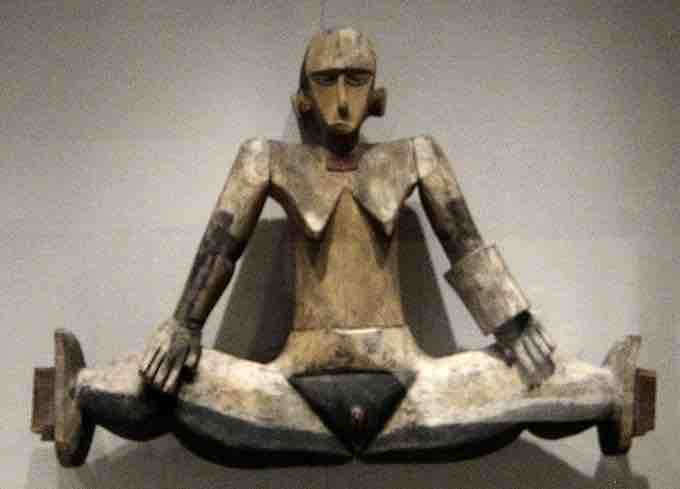Overview: The Caroline Islands
The Caroline Islands are a widely scattered archipelago of tiny islands in the western Pacific Ocean, to the north of New Guinea. Technically belonging to the region of Micronesia, these islands have a rich history of Oceanic art.
Nan Madol
Among the most prominent works of the region is the megalithic floating city of Nan Madol, which today lies in ruin off the eastern shore of the island of Pohnpei. Construction on the city started in 1200 CE and was still underway when European invaders began to arrive around the year 1600. Often called the "Venice of the Pacific," Nan Madol was constructed in a lagoon and consists of a series of small, artificial islands linked by a network of canals.
Nan Madol was the ceremonial and political seat of the Saudeleur Dynasty, which united Pohnpei's estimated 25,000 people until about 1628. Set apart between the main island of Pohnpei and Temwen Island, it was a scene of human activity as early as the first or second century CE. By the 8th or 9th century, islet construction had started, but the distinctive megalithic architecture was probably not begun until the 12th or early 13th century. Around the turn of the 19th century, the city underwent a decline, and it was abandoned altogether by the 1820s.
Today Nan Madol forms an archaeological district covering more than 18 km² and includes the stone architecture built up on a coral reef flat along the shore of Temwen Island, several other artificial islets, and the adjacent Pohnpei main island coastline. The site core with its stone walls encloses an area approximately 1.5 km long by 0.5 km wide and contains nearly 100 artificial islets—stone and coral fill platforms—bordered by tidal canals. Many islets were once occupied by the dwellings of priests, while some islets served a special purpose such as food preparation, canoe construction on Dapahu, or coconut oil preparation on Peinering. High walls surrounding tombs are located on Peinkitel, Karian, and Lemenkou, but the most prominent is the royal mortuary islet of Nandauwas, where walls 18–25 feet high surround a central tomb enclosure within the main courtyard.
Nan Madol
Nan Madol is a ruined city adjacent to the eastern shore of the island of Pohnpei that was the capital of the Saudeleur Dynasty until about 1628.
Art of the Islands
During the 19th century, the Caroline Islands were divided up among the colonial powers, but art continued to thrive. This work was typically gendered in the communities. Men in the Caroline Islands created elaborate wood carvings, including stylized bowls, canoe ornaments, sculptured figures, ceremonial vessels, and richly decorated ceremonial houses. Women created textiles, ornaments, bracelets, and headbands. Stylistically, this art is streamlined with a practical simplicity but typically finished with a high standard of quality.
Dilukai
Dilukai are wooden figures of young women carved over the doorways of chiefs' houses (known as bai) in the Palauan archipelago. They are typically shown with legs splayed, revealing a large, black, triangular pubic area with the hands resting on the thighs. These female figures were carved to protect the villagers' health and crops and ward off evil spirits. They were traditionally created by ritual specialists according to strict rules, which, if broken, would result in the deaths of the carver and the chief. Female figures presenting their vulva can be found in many cultures, symbolizing fertility and (spiritual) rebirth and protecting from evil spirits. When Christian missionaries arrived in the region, they disapproved of the Dilukai and so changed the context, claiming that their purpose was to shame an immoral woman.

Dilukai from the Caroline Islands, Belau (Palau), 19th-early 20th century, Metropolitan Museum of Art
Dilukai are wooden figures of young women carved over the doorways of chiefs' houses (bai) to protect the villagers' health and crops and ward off evil spirits.
The Effects of Colonialism
During the first half of the 20th century, Western and Japanese imperialism began to affect the region. A number of historical artistic traditions simply ceased to be practiced, while others were maintained. By the second half of the century, however, when the Caroline Islands secured their independence from colonial forces, there was a resurgence of interest in traditional arts, and a new generation of artists began to learn these forms. Toward the end of the 20th century, a notable, regional movement of contemporary art had emerged throughout Micronesia, to which artists from the Caroline Islands contributed.